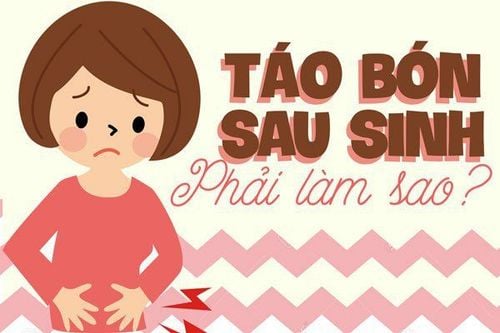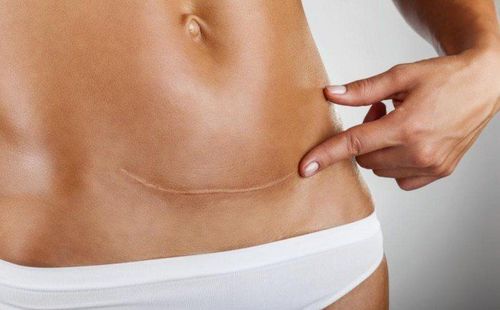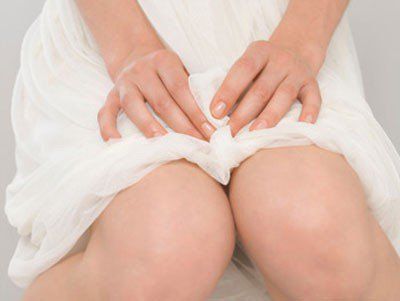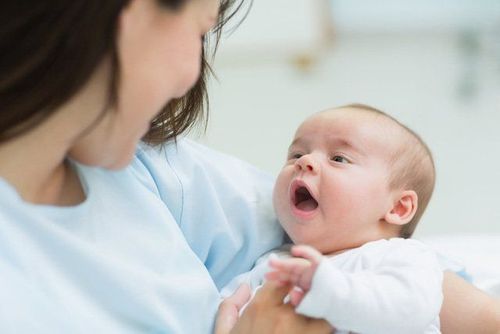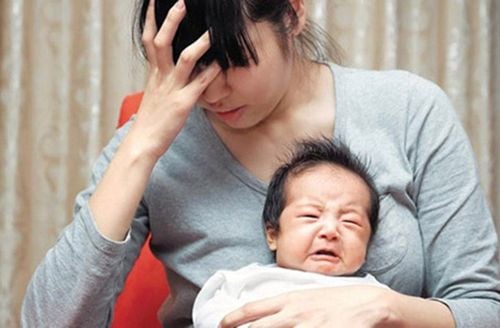This is an automatically translated article.
The article is professionally consulted by Master, Doctor Le Nhat Nguyen - Department of Obstetrics and Gynecology - Vinmec Da Nang International HospitalPostpartum suture infection is an infection that occurs after a cesarean or vaginal birth at the site of an incision or perineal incision. Therefore, to reduce the risk of surgical site infection complications after birth, the following article will guide mothers on how to take care of themselves after vaginal birth and cesarean section.
1. Care of the perineal incision after vaginal birth
After making an episiotomy, the doctor or midwife will stitch up the perineum by suturing the wound. The stitches are usually black but can be of other colors. You will probably see stitches looking at the area between the vulva and anus.
Usually, the doctor will use absorbable sutures to suture the perineum and these will disappear on their own within 2 to 4 weeks.
Perineal sutures usually begin to dissolve within a few days and disappear after a week or two. You may notice bits of stitches (which appear as little black spots left on toilet paper) when you clean your vagina to prevent vaginal infections after giving birth.
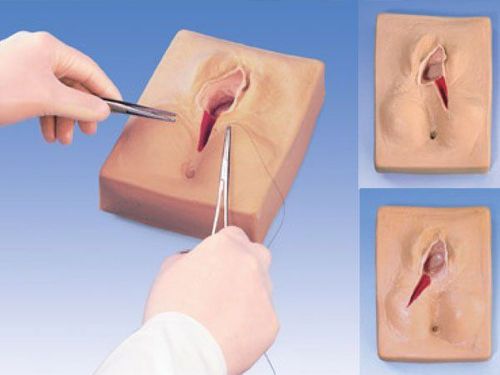
2. Instructions for caring for perineal stitches
When you return home from the hospital, you may feel pain in the perineal area. There may be a nagging pain or throbbing sensation, or you may feel an occasional jolt.
You can ease this discomfort by applying ice for the first day or two, especially if the wound is still swollen and red. The skin in this area is very sensitive. Some moms like to cover their pelvic area with a witch hazel washcloth, freeze it, and then put it on their underwear for comfort.
The most important thing is to keep your perineal area clean. Starting as soon as you get home, use a spray bottle filled with warm water to clean the area every time you shower. Pat the area dry instead of wiping to avoid tearing the stitches.
Here are some other helpful tips to keep the vaginal area clean after giving birth:
Avoid tampons for the first 6 weeks after giving birth. Buy a shallow mini tub called a sitz bath that fits over the toilet seat and allows you to soak the stitches for cleaning and pain relief. Remember not to soak in warm water until at least 24 hours after giving birth. Change tampons every 2 to 4 hours. Choose cooling pads that are marketed for hemorrhoids to relieve pain. Note, you should look for products that are hypoallergenic, pH balanced, and fragrance-free. Buy a numbing spray specifically for new mothers, which can be found at most drugstores. Lidocaine gel may also be helpful. Prevent constipation by increasing water and fiber intake. Talk to your doctor about using stool softeners and laxatives as needed. Take an over-the-counter pain reliever such as Motrin (ibuprofen) to help relieve discomfort. Use antibacterial hand sanitizer on your hands before cleaning the perineal area (this helps you avoid transferring bacteria from your hands to the perineal area). Use baby wipes instead of toilet paper to reduce irritation from friction. Use a blow dryer on low if you have trouble drying the wound. Keep the dryer at least 8 inches away from your skin. Wipe from front to back to avoid bringing bacteria from the anal area to the front of your door.
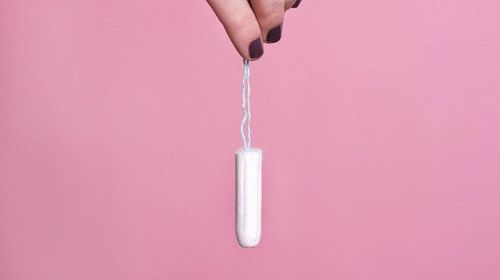
3. When do you need a medical facility?
As with all surgeries, infection can occur after an episiotomy. Call your doctor or go to the emergency room if you have an infection such as:
Fever 100 degrees F or above Discharge that smells bad and/or is bluish Red and swollen around the stitches Severe pain at the incision Yes pus can be seen in or around the wound Remember that in addition to infection, there are other complications that can occur after an episiotomy, some of which can be serious. If you have any unusual or worrying symptoms, don't hesitate to contact your doctor.
4. Care for stitches after cesarean section
In a cesarean section, the doctor makes two incisions: The first incision is through the skin of the lower abdomen, about an inch or two from the pubic hairline. The second incision is in the uterus, which is where the doctor will reach to bring the baby out. The type of cut on the abdomen may not be the same as the cut on the uterus. There are two types of caesarean section:
Horizontal caesarean section. A low horizontal incision (or “bikini cut”) is used in 95% of cesarean deliveries today. That's because it's done on the lowest part of the uterus, where it's thinner, resulting in less bleeding. Cut vertically. Also known as a “classic” cesarean, this cut is down the center of the abdomen, usually from below the navel to the pubic hairline. This technique used to be popular in the past, but is now reserved for specific cases, like if you've had a scar there from previous surgery, if the baby is low in the uterus or in an unusual position. usually or if there is an emergency requiring immediate delivery (eg, severe fetal distress or heavy bleeding from placenta previa). Longitudinal incisions may be slightly more painful and require more recovery time.
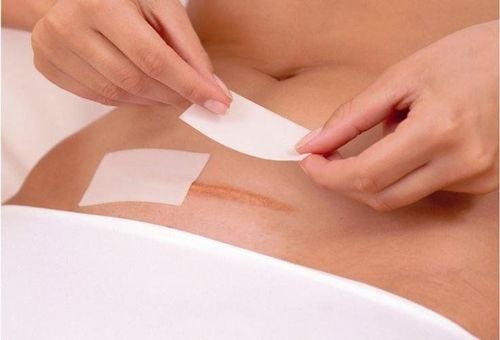
5. Care for stitches after cesarean section
Following these guidelines will help your cesarean section heal faster:
Keep the stitches clean. Once a day (when you shower), let soapy water drip onto the wound. It doesn't have to be waterproof and you should avoid vigorous rubbing. When you're done, gently pat the area dry with a clean towel. You can use ointment and bandage your stitches. Some doctors say you can apply topical antibiotics or grease and lightly bandage the wound; But some doctors think it's better to put nothing on and let the wound dry, uncovered. Therefore, you should follow your doctor's instructions on which type is best for your stitches. Leave the stitches open. Air promotes wound healing in the skin, so whenever possible, expose your scar to air. That doesn't mean you have to walk around half-naked, you can wear a loose robe at night to let the air circulate. Postpartum examination. If your incision has been closed with non-dissolving sutures, be sure to keep your follow-up appointments after delivery so your doctor can remove the stitches. Leaving stitches on longer than recommended can result in a scar that looks unsightly. The American College of Obstetricians and Gynecologists (ACOG) now recommends the first postpartum doctor visit within three weeks of giving birth instead of four to six weeks as previous guidelines suggested, in addition, The mother needs another comprehensive examination within 12 weeks of giving birth. For a cesarean section, the timing and frequency of visits with your doctor can vary, so talk to your doctor about when to see your baby after delivery. No exercise. You need time for the scars on the uterus and on the abdomen to heal. So avoid bending, twisting or sudden movements and don't lift anything heavier than your baby. If you want to exercise, talk to your doctor about when to exercise and what exercise is right for you. Go for a walk. Just because you can't exercise right now doesn't mean you can't stay active. In fact, walking increases blood flow which facilitates wound healing and reduces the risk of developing deep vein thrombosis, or DVT (a blood clot more common during pregnancy and later in life). born). As soon as you have time, put your baby in the stroller and walk around your neighborhood.
6. When to see the doctor after cesarean section?
If you experience any of the following symptoms, contact your doctor immediately:
The stitches or surrounding skin are red or swollen Fever higher than 100.4 F Drain or discharge from Incision Odor from the incision Stitches become hard or you feel increasing pain around the stitches Pain increases Your incision is open Vinmec International General Hospital is a high quality medical facility in Vietnam Nam with a team of highly qualified medical professionals, well-trained, domestic and foreign, experienced.
A system of modern and advanced medical equipment, possessing many of the best machines in the world, helping to detect many difficult and dangerous diseases in a short time, supporting the diagnosis and treatment of doctors the most effective. The hospital space is designed according to 5-star hotel standards, giving patients comfort, friendliness and peace of mind.
Please dial HOTLINE for more information or register for an appointment HERE. Download MyVinmec app to make appointments faster and to manage your bookings easily.
Reference source: whattoexpect.com





